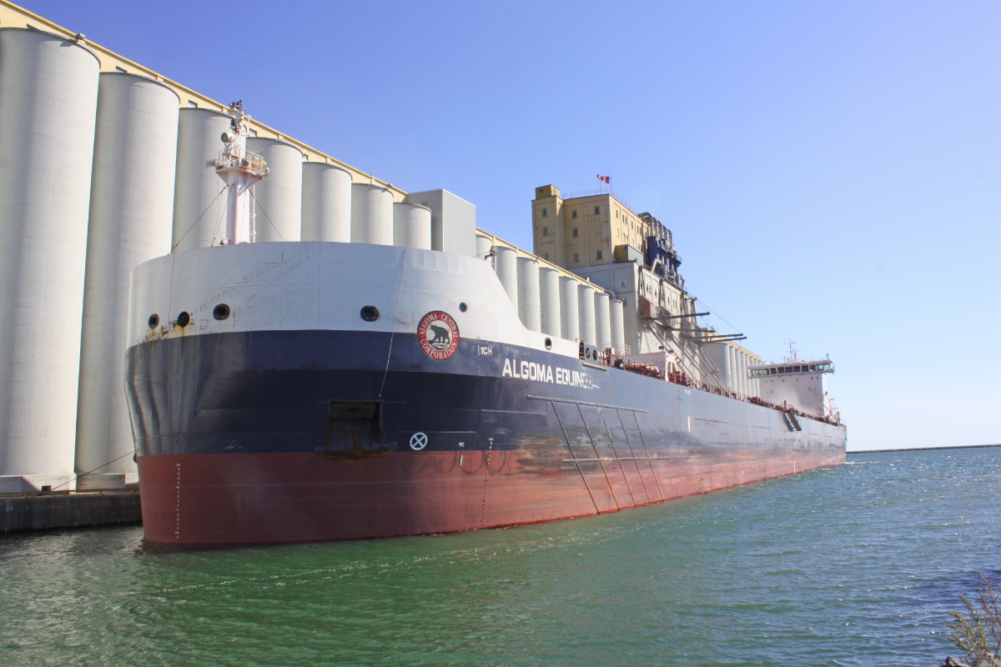OTTAWA, ONTARIO, CANADA — June cargo shipments picked up at Canadian ports and the St. Lawrence Seaway with increased grain exports, agricultural inputs and return for demand in construction materials.
According to the Chamber of Marine Commerce, The St. Lawrence Seaway reported that cargo tonnage from April 1 through June 30 through the bi-national transportation corridor totaled nearly 11.7 million tonnes. While these volumes are down 8% compared to the same period in 2019, cargo shipments improved in June, narrowing the year-over-year decline.
“Canadian grain exports through our trade corridor accelerated in June but we also saw improvements in shipments of construction materials such as stone, cement and gypsum as COVID-19 restrictions continue to be lifted,” said Terence Bowles, president and chief executive officer (CEO) of The St. Lawrence Seaway Management Corp. “That being said, steep declines in shipments of steel-making materials and petroleum products remain, reflecting the challenges faced by the manufacturing and energy sectors. There is still a way to go for recovery.”
Year-to-date Canadian grain exports are up 11.26% from the same period in 2019, the Chamber of Marine Commerce said.
The Port of Thunder Bay’s grain shipments are 35% above the five-year average with a total of 3.3 million tonnes of grain shipped.
“One benefit of the increase in grain volumes is that shippers start to build efficiencies into the system, incentivizing them to continue using the system in future periods,” said Tim Heney, CEO at the Port of Thunder Bay.
In June, the Windsor Port Authority had several grain shipments that contributed to an overall cargo tonnage increase of 2.4% for the month compared to the same time last year, the Chamber of Marine Commerce said. Its total year-to-date tonnage is down 7.5% but sees June shipments as an improvement compared to May 2020.
“Grain shipments continue to exceed the prior year while aggregate shipments continue to recover from the early-year impact of COVID-19’s delay for construction projects,” Steve Salmons, president and CEO of Port Windsor.
The Hamilton-Oshawa Port Authority (HOPA) is seeing growth in some agricultural sector commodities, with a 9% increase in shipments in June 2020 compared to the same time last year.
“The fact that we are seeing more fertilizer coming through the ports of Hamilton and Oshawa is a good signal of confidence in the region’s agricultural production going forward,” said Ian Hamilton, president and CEO of HOPA Ports. “We expect to see this translate into accelerated exports of Ontario grain and soybeans later in the season.”
Marine cargo volumes at the Port of Johnstown for the first half of 2020 are up 12% over the same period last year, the Chamber of Marine Commerce said.
“For the first half of 2020 we are seeing our revenues a little under 2019, however, with two corn import vessels booked, one for August and one for September, and with the harvest looking like it could be a banner year, we are feeling very positive about our position,” said Robert Dalley, general manager for the Port of Johnstown. “With the recent expansion project at the port including the addition of a monster 16,000 tonne grain bin, we have ample capacity to handle a big harvest. The recent rains in our area in the past couple of days are much needed and will certainly help with the quality and size of harvest.”
Follow our breaking news coverage of the coronavirus/COVID-19 situation.






